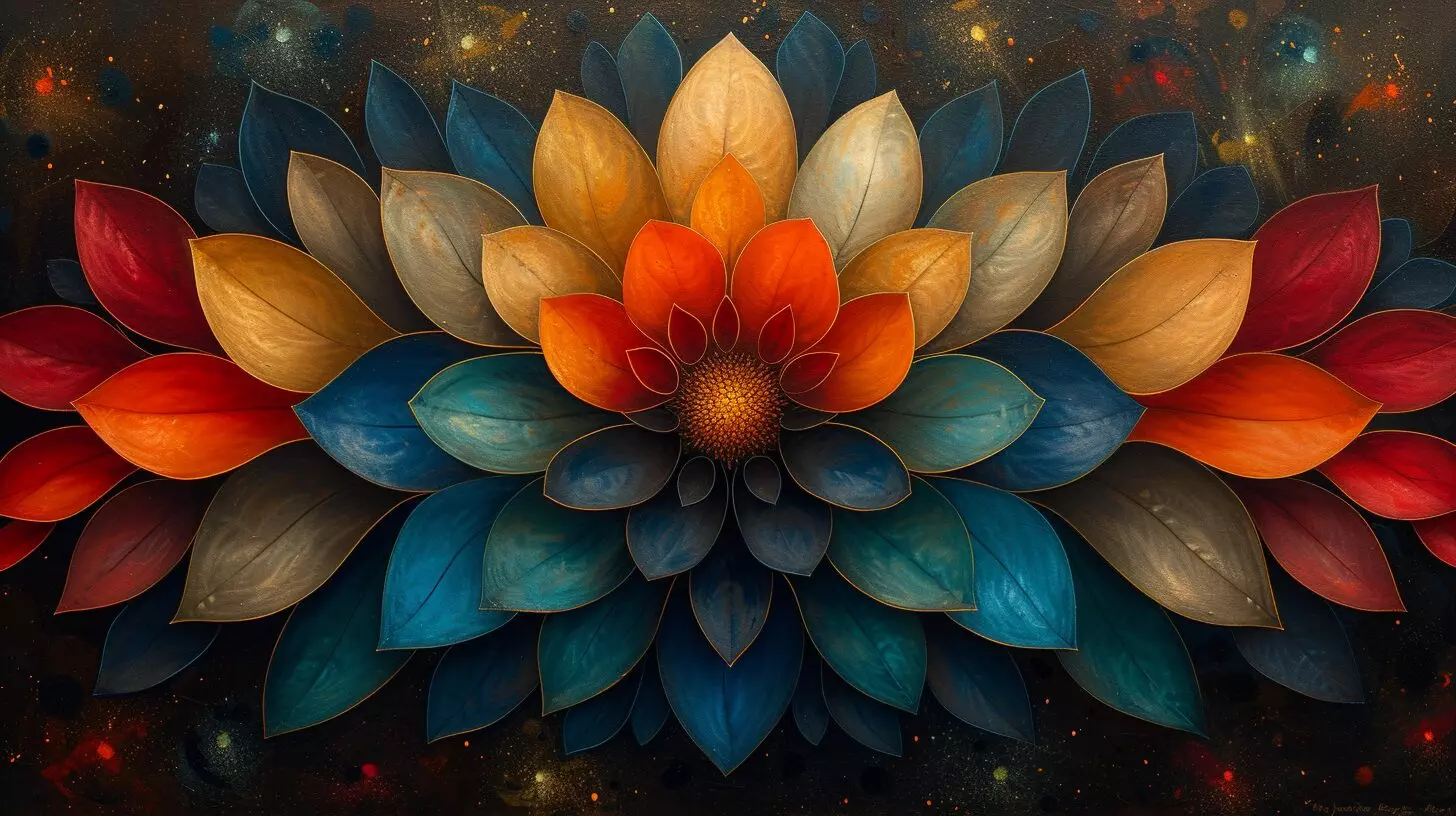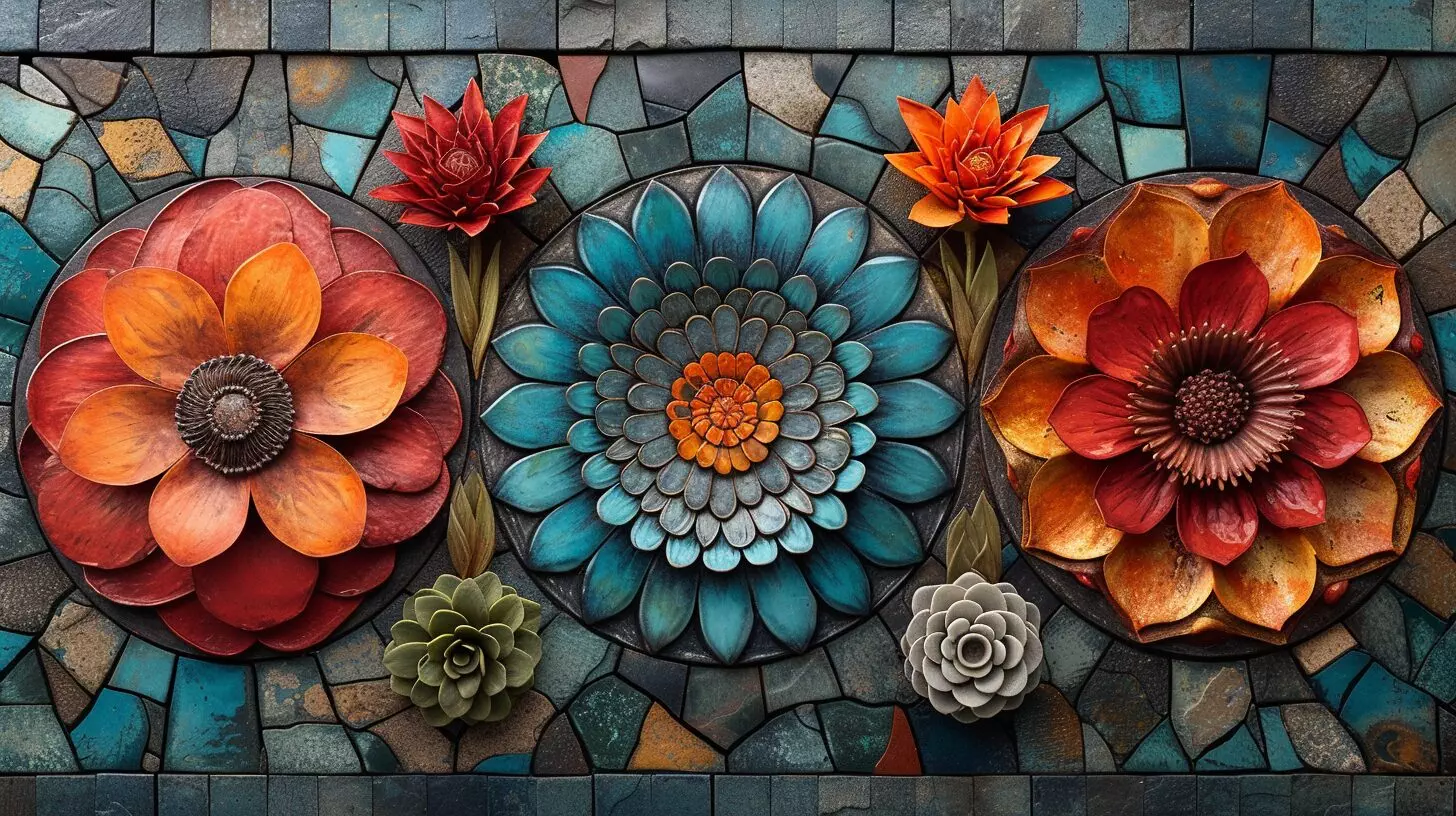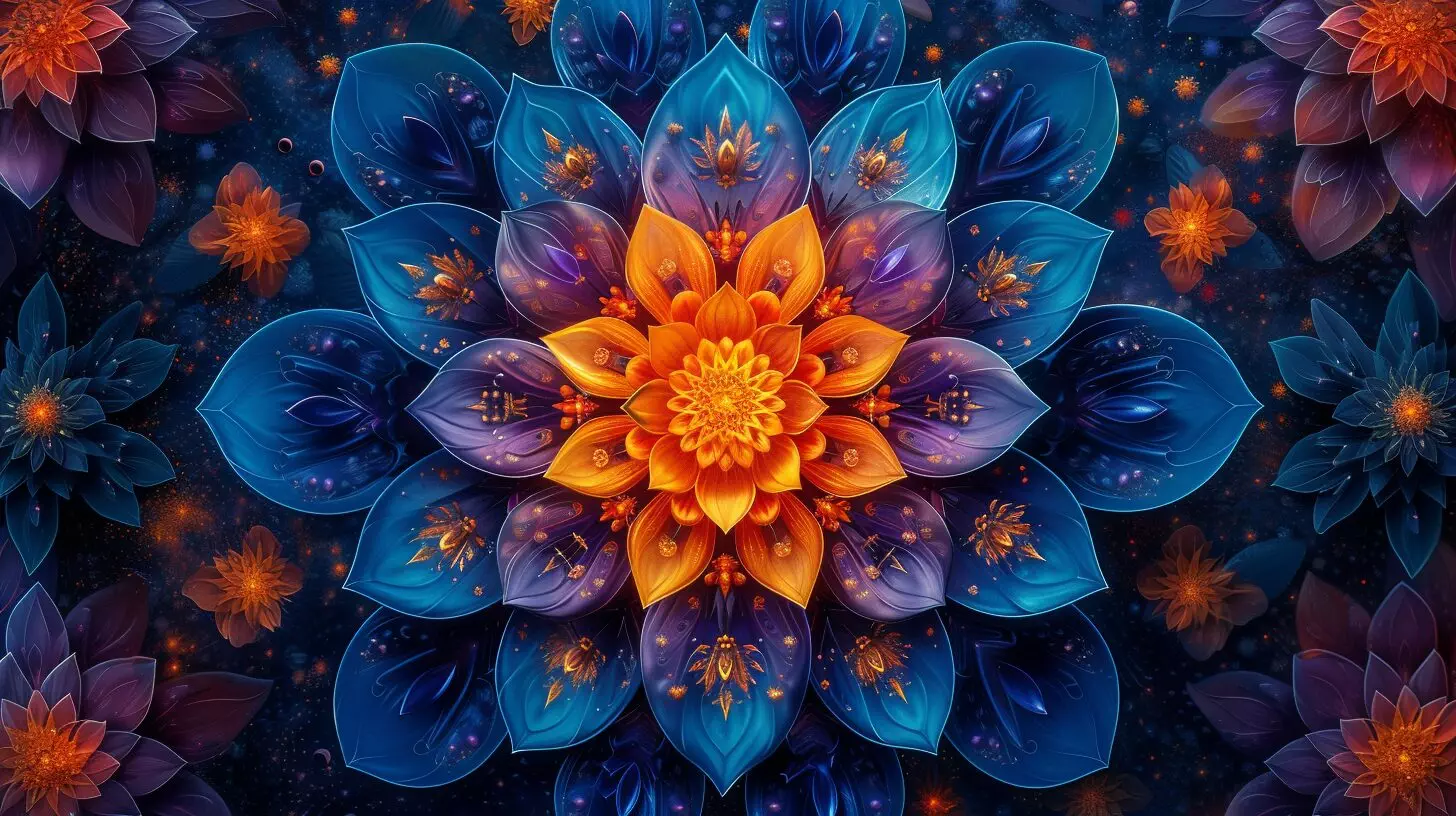As creative minds, our constant pursuit centers around discovering methods that can elevate our artistry and captivate our audience. The utilization of radial patterns in artistic creation, a method that has been skillfully adopted for centuries to instill harmony and stability, remains an enduring and influential source of inspiration for contemporary artists.
In this exploration, we will delve into the secrets behind radial designs. We will discover how they create visually captivating pieces and deepen our understanding of the principles of design.
Additionally, we will explore the techniques and tips that artists use to achieve visual harmony and cohesion in their compositions.
Key Takeaways
- Radial designs create balance and composition through radiating forms from a central focal point.
- Symmetry plays a significant role in radial designs, creating a sense of equilibrium and order.
- Composition in radial designs involves arranging elements around the central focal point, creating movement and energy.
- Artists can enhance their creativity by incorporating radial designs into their work.
Understanding Radial Designs and Radial Balance in Art

Understanding radial designs in art and balance in art involves creating symmetrical arrangements of radiating forms around a central point, enhancing harmony and visual interest for the viewer.
Symmetry plays a crucial role in radial designs, promoting balance and cohesion as elements are symmetrically arranged around the central focal point, creating visually appealing compositions.
Composition is essential, requiring the arrangement of elements for a pleasing visual effect. The central focal point acts as an anchor, with outward radiating elements generating movement and energy, resulting in dynamic and visually interesting compositions.
radial designs in art and balance are versatile, manifesting across various art forms like painting, clip art, and photography.
Artists can nurture creativity and skills by integrating radial designs, enabling experimentation with arrangements, colors, and shapes for unique and captivating compositions.
Implementing Radial Designs in Different Art Forms

Implementing radial designs in different art forms allows artists to explore various mediums and create visually captivating compositions.
This technique can be applied to a wide range of art forms, including painting, clip art, photography, architecture, and even color theory.
By incorporating radial balance in art, artists can create aesthetically pleasing compositions that are harmonious and visually interesting.
| Art Form | Description | Example of Radial Design |
|---|---|---|
| Painting | Artists can use radial designs to create balance and harmony | A painting of a mandala, with intricate patterns radiating from a central point |
| Clip Art | Radial designs in clip art can add visual appeal | A clip art image of a sun with rays radiating outwards |
| Photography | Radial symmetry in photography can create balanced compositions | A photograph of a spiral staircase, with the steps radiating outwards from the center |
| Architecture | Radial balance in architecture can create eye-catching structures | The dome of the Pantheon in Rome, with its circular shape and radiating beams |
| Color Theory | Applying radial designs in color theory can enhance compositions | A color wheel, with the colors arranged in a circular pattern, creating a sense of balance and harmony |
Understanding the principles of design, such as balance and composition, artists can create visually captivating works that are visually appealing and harmonious.
Radial balance in art provides a sense of cohesion and unity, drawing the viewer’s attention towards the central focal point and creating a sense of visual harmony.
Whether it’s a painting, clip art, photography, architecture, or color theory, the use of radial designs adds an element of intrigue and captivates the audience’s imagination.
Creating Radial Designs: Techniques and Tips

Creating a radial designs in art involves careful planning, starting with determining the focal point or center. This serves as the basis for radiating elements, which can be lines, shapes, or colors. Experimentation helps find the most visually appealing arrangement.
Tools and materials vary by art form. Painting may use brushes, while digital designs can employ graphic software like Adobe Illustrator. Photography benefits from lenses with wide-angle or fisheye capabilities.
For achieving radial balance, varying the size and length of radiating elements is crucial to avoid monotony. Contrast in colors or values adds depth, guiding the viewer’s eye to the center. Incorporating symmetry and repetition further enhances the radial balance and overall composition.
Exploring the Symbolism and Cultural Significance of Radial Designs

Radial designs carry profound symbolism and cultural significance, offering a captivating exploration across diverse cultures and artistic traditions.
Mandalas, notable in Hinduism and Buddhism, symbolize the universe’s interconnectedness, portraying a sacred center and radiating forms signifying movement and energy.
religious contexts, radial balance plays a crucial role in Christian art, emphasizing the divinity and importance of religious figures through circular patterns.
The cultural importance of radial designs extends globally, seen in Native American art where circular patterns symbolize interconnectedness and cyclical life, and in African art where they represent unity, community, and natural cycles.
Studying these designs reveals the rich diversity of human creativity and a universal pursuit of balance and harmony in art.
How can Radial Designs be Incorporated into Font Pairing for Times New Roman in 2024?
When considering font pairing with Times Roman in 2024, incorporating radial designs can add visual interest. Using circular or radial elements in graphic accents, such as borders or dividers, can create a cohesive and stylish look when pairing different fonts with Times New Roman.
Pushing the Boundaries of Radial Designs: Contemporary Examples and Innovations

Contemporary artists are redefining radial designs by embracing asymmetry, incorporating technology, and challenging traditional patterns. This departure allows for the creation of unique compositions that defy established notions of radial symmetry.
Notably, the integration of technology, particularly digital tools and photography, opens new possibilities. Artists can manipulate images, craft intricate patterns, and experiment with color and light in ways previously unattainable, resulting in captivating and intriguing artwork.
To paint a picture of these contemporary innovations, let’s take a look at a 3 column and 4 row table:
| Artist | Artwork | Medium |
|---|---|---|
| Alex Turner | “Cosmic Harmony” | Digital Painting |
| Maya Patel | “Emanating Energy” | Photography |
| Javier Rodriguez | “Symmetry in Chaos” | Mixed Media |
| Emma Thompson | “Disrupted Balance” | Sculpture |
These artists use the principles of radial balance and composition to create visually striking pieces. They are not bound by traditional symmetrical designs but instead, explore the interplay between harmony and chaos.
Their artwork challenges the viewer’s perception and invites them to question the concept of balance in contemporary art.
In conclusion, radial designs in art provide a captivating and visually appealing way to achieve balance and composition. Additionally, the use of radial designs can create a sense of movement and energy within a piece, drawing the viewer’s eye to the center of the composition. When incorporating radial designs into artwork, it’s important to consider the use of various shapes and lines to add complexity and visual interest. For curve text design tips, it’s best to utilize software or tools that allow for precise and fluid manipulation of text to achieve the desired effect within the radial design. The symmetric and geometric nature of radial designs inspires creativity and enhances artistic skills.
By understanding the principles of radial balance and exploring various techniques, artists can push the boundaries of their designs and create visually harmonious and culturally significant artworks.
Conclusion
In conclusion, radial designs in art provide a captivating and visually appealing way to achieve balance and composition.
By incorporating radiating or emanating forms, artists can create visually captivating pieces that evoke emotions in their audience.
The symmetric and geometric nature of radial designs inspires creativity and enhances artistic skills.
Through understanding the principles of radial balance and exploring various techniques, artists can push the boundaries of their designs and create visually harmonious and culturally significant artworks.
Frequently Asked Questions
What is radial radial designs in art?
Radial balance in art refers to a design that radiates outward from a central point, creating a sense of symmetry and harmony. It is commonly found in patterns, mandalas, and architectural elements such as rose windows.
How can I achieve radial balance in my art and design projects?
You can achieve radial balance by arranging visual elements, such as shapes, colors, and patterns, around a central point in a symmetrical manner. This creates a sense of equilibrium and unity in the composition.
What are some examples of radial balance in photography?
Examples of radial balance in photography include images with a central focal point from which other elements radiate outwards, creating a sense of symmetry and harmony within the frame.
What is the definition of radial balance?
Radial balance is a type of balance in art and design where visual elements are arranged symmetrically around a central point, creating a sense of equilibrium and harmony in the composition.
Can you provide examples of radial balance in art and design?
Examples of radial balance can be found in mandalas, rose windows, and geometric patterns that radiate outward from a central point, creating a visually harmonious composition.

